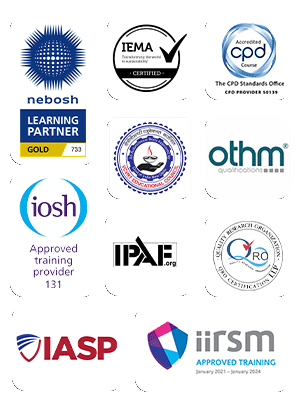Advanced Diploma in Occupational Health and Safety Environmental & Risk Management
This Advanced Diploma program is a qualification for aspiring health and safety professionals which has been designed to provide students with the expertise required to undertake a career as a safety and health practitioner and also provides a sound basis for progression to postgraduate study in the similar field or other competent industries.
In recognition of the importance of this crucial business area, we have worked with experienced practitioners in designing this programme. This expertise, along with informed academic knowledge, provides a course which teaches the skills and knowledge for the practical application of Strategic Health, Safety and Risk Management essential in the professional environment today.
Course Overview
This course provide students with the necessary means to develop the capacity to carry out independent scientific and technical research and assessments on environmental issues. In addition, students will learn to analyse and assess environmental systems and problems; be able to propose sustainable solutions to environmental problems; and contribute to the development of policies and strategies for environmental planning.
This Advanced Diploma programme enhances you to understand natural systems processes in a sustainable way and apply this knowledge in your day-to-day work.
The aims of the programme are:
To develop the students research and analytical skills
To develop a wider and more in-depth understanding of occupational health, safety, environment and Risk Management theory and practice.
The course is designed to meet the needs of existing or aspiring Managers and leaders in health or allied organizations
Topics Covered
1st Year
2nd Year
Practical approach of international Health, Safety, Environment and the Risk Management
Approximately 10,000 words in length
Examination
THEORY PAPER
MDT-1 International management of health and safety (100 Marks)
MDT-2 International control of hazardous agents in the workplace (100 Marks)
MDT-3 International workplace and work equipment safety (100 Marks) MDT-4 Safety Management and Communication (100 Marks)
MDT-5 Risk Management and Control (100 Marks)
MDT-6Fundamentals of Health and Safety Engineering (100 Marks)
MDT-7Environmental Planning and Management (100 Marks)
MDT-8 Environmental Science & Technology (100 Marks)
MDT-9 Environmental Technology for Sustainable Development (100 Marks)
MDT-10Environmental Technology and Engineering (100 Marks)
PRACTICAL PAPER
MDP-11 MDP- Practical approach of international Health, Safety, Environment and the Risk Management (200 Marks)
Candidates/ Delegates who successfully complete and obtain the National Diploma Course (approved by the Govt. of India) could further apply for a membership status with IIRSM. Awarding of the membership is at the discretion of IIRSM provided they have met the required guidelines for the same.
Successful candidate will get Certificate & Mark list issued from Central Board of Examination & National Development agency, Promoted by Govt. of India
Recognized in most countries
Certification considered one year count increment in your educational qualification
The certificate is also recognized to be attested by
Consular Services : i.e. Indian consulate
Ministry of External Affairs : India & any other ministry of foreign affairs that includes middle east region.



